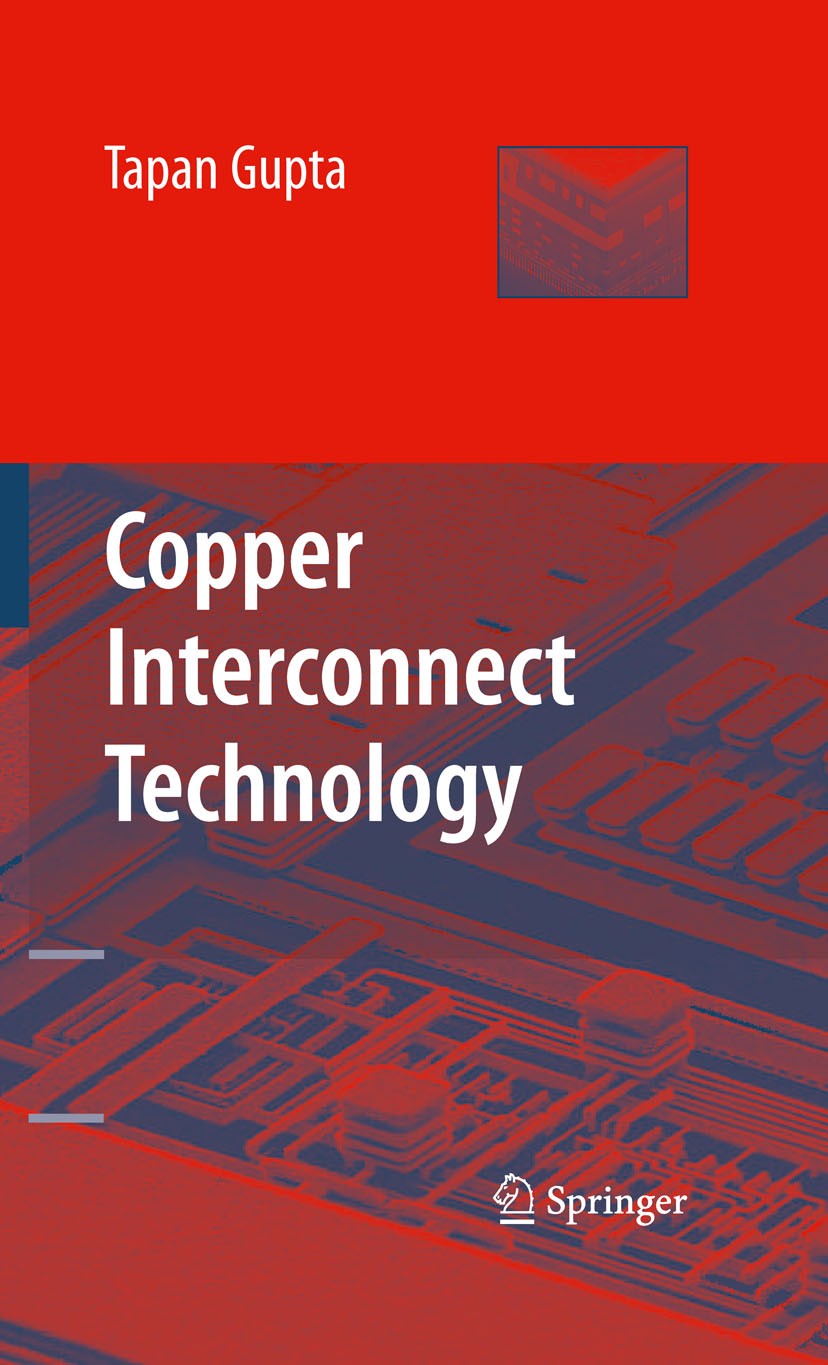| 书目名称 | Copper Interconnect Technology | | 编辑 | Tapan Gupta | | 视频video | http://file.papertrans.cn/239/238168/238168.mp4 | | 概述 | Provides a detailed description of critical next-generation materials and technology for microelectronics.Suitable for use as a teaching text in graduate programs and industry short courses.Significan | | 图书封面 |  | | 描述 | .Since overall circuit performance has depended primarily on transistor properties, previous efforts to enhance circuit and system speed were focused on transistors as well. During the last decade, however, the parasitic resistance, capacitance, and inductance associated with interconnections began to influence circuit performance and will be the primary factors in the evolution of nanoscale ULSI technology. Because metallic conductivity and resistance to electromigration of bulk copper (Cu) are better than aluminum, use of copper and low-k materials is now prevalent in the international microelectronics industry. As the feature size of the Cu-lines forming interconnects is scaled, resistivity of the lines increases. At the same time electromigration and stress-induced voids due to increased current density become significant reliability issues. Although copper/low-k technology has become fairly mature, there is no single book available on the promise and challenges of these next-generation technologies. In this book, a leader in the field describes advanced laser systems with lower radiation wavelengths, photolithography materials, and mathematical modeling approaches to address t | | 出版日期 | Book 2009 | | 关键词 | circuit performance; copper/low-k technology; cu interconnect technology; electronics; electronics packa | | 版次 | 1 | | doi | https://doi.org/10.1007/978-1-4419-0076-0 | | isbn_softcover | 978-1-4899-8511-8 | | isbn_ebook | 978-1-4419-0076-0 | | copyright | Springer-Verlag New York 2009 |
The information of publication is updating

|
|
 |Archiver|手机版|小黑屋|
派博传思国际
( 京公网安备110108008328)
GMT+8, 2025-12-17 12:24
|Archiver|手机版|小黑屋|
派博传思国际
( 京公网安备110108008328)
GMT+8, 2025-12-17 12:24


